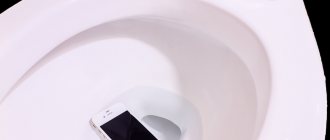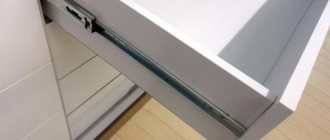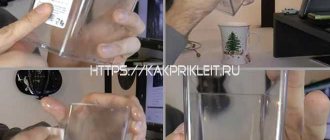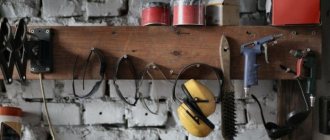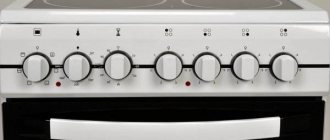To make daily use of the toilet comfortable, a special pad is used - a seat. Moreover, most of them are equipped with a lid. It is the breakdown of the latter that one most often encounters. Agree, there is little pleasure in a broken fastener.
But even the usual fastening of the toilet lid often raises questions among people. No wonder, considering that depending on the model, the fasteners and configuration of toilet lids differ radically.
Why not call a plumber over such a trifle? Do you want to replace the seat yourself, but are you afraid of breaking the new one due to inexperience? We will help you figure out the secrets of installing a new seat - the article discusses the main designs of toilet seats and their features.
Detailed instructions for attaching the hinged lid and models equipped with a micro-lift are also provided. For a better understanding of the replacement process, the material in our article is supplemented with visual photos and a video that demonstrates the installation of a seat with a micro-lift.
Selection criteria in case of replacement
If it so happens that the question of replacing the toilet seat has arisen, you need to choose a toilet seat that matches the existing plumbing fixtures. It is recommended to take measurements of the plumbing fixture in terms of dimensions and shape. You should also clarify the location of the mounting holes under the seat.
The width size is measured at the points of greatest “run-up” of the structure. The length dimension is taken from the edge of the front part of the curb to the point of the center line passing between the centers of the holes intended for attaching the toilet seat.
Standard dimensions of plumbing fixtures for different designs. Based on these parameters, a toilet seat is selected in case of a new installation to replace the old toilet seat. If you know these dimensions, choosing a seat of a suitable configuration is easy.
Often, toilet owners who have had to change the toilet seat prefer to choose more advanced models instead of the standard design. This choice is explained by their desire for novelty.
Meanwhile, new products “with heating”, “with backlighting”, “with motion sensors” in practice turn into even bigger problems. A serious manufacturer of plumbing fixtures is not yet in a hurry to offer such an “exclusive” to the buyer. Such proposals usually come from Chinese companies.
Choosing a new seat
Before removing a toilet seat that is broken for some reason, you should buy a new one. Since the range of these products is huge, making a choice is not easy. Therefore, below are the main features of seats made of different materials:
| Materials | Peculiarities |
| Plastic | This material includes:
The seats, made of plastic, have stiffening ribs and rubber inserts or plastic protrusions on the bottom side. Their main advantage is their low price, but their disadvantages include fragility. |
| Duroplast | This material is essentially the same plastic, but with a denser structure, reminiscent of ceramics. Duroplast products are resistant to ultraviolet radiation and chemicals, and usually have an antibacterial coating that prevents bacteria from multiplying. The advantage is an attractive appearance and good strength, however, the cost of such seats is higher than plastic ones. |
| Polymer fabric with foam rubber (soft seat) | The design is a rigid plastic base covered with polymer fabric, under which there is soft foam rubber. This seat is more comfortable, however, it breaks quite quickly. |
| Chipboard, MDF or wood | Seats of this type usually look very attractive, however, their disadvantage is their heavy weight. If it falls, the structure can simply split the toilet. |
Wooden seat
Having decided on the material, you should decide which functions of the product are important to you. After this, you can select specific models.
Advice! Before you buy a seat with a cover, you need to take it in your hands and make sure that there are no defects. For example, if the seat has play or gap, then it is better to refuse to buy it.
Cover removal diagram
Exclusive toilet seats
Plumbing fixtures for the toilet, equipped with electronics, have not been surprising for a long time. Recently, toilets have also come close to the electronic fraternity. Regulators for drainage, water intake, disinfection, filtration - these functions become integral parts of bidets and urinals.
Some of these functions are also used on toilet seats. Thus, electronic bidet covers and heated seats are quickly gaining popularity.
The installation of the electric model is basically the same as the standard version. The only addition is cable laying and installation of an electrical outlet.
The toilet is from the group of “exclusive” products. In addition to the usual functions, the device is equipped with an additional feature - a seat heating system. Installation of such plumbing requires an additional supply of electrical communications.
The designs of models with illuminated bowls are not entirely clear - what benefit do they bring to the toilet visitor? However, these solutions remain relevant due to the stability of their demand in the market.
The installation of a backlit seat must include the installation of an electrical network in the toilet area. At the same time, there are models of seat covers, where the backlight lamps are powered by batteries.
The batteries are built directly inside the seat structure. You cannot do without installing electrical communications in the case of using toilets with a motion control function.
General information
Problems with the lid and seat occur very often, so they are, perhaps, in second place after breakdowns of the drain tank. Until recently, these devices were simply a circle with a lid, most often made of plastic.
Nowadays, these products can be a rather complex design, including such functions as:
- Microlift;
- Heating;
- Intestinal gas analyzer;
- Built-in bidet, etc.
In the photo - a seat with a microlift
Lids can break for a variety of reasons:
- From time;
- As a result of a manufacturing defect;
- As a result of mechanical damage.
The most common types of breakdowns are:
- The appearance of cracks on the surface;
- Broken fasteners.
Trying to repair the cover yourself is useless. It is much easier and faster to purchase a new one.
Duroplast seat
Problems when replacing a seat
Some problems when replacing a toilet seat or lid may occur on plumbing fixtures that have served the owners for several years. Removing fasteners on an old toilet seat is especially difficult if metal bolts and nuts that are susceptible to corrosion were used.
The high level of humidity in the toilet area is created by the water present in the flush cistern. This is the main reason for the appearance of rust and oxides on threads.
In this condition, it is extremely difficult to unscrew the nuts from the mounting bolts, and sometimes impossible using traditional methods. We have to resort to radical measures.
Metal fastenings of toilet plumbing fixtures, which do not have protection against oxides and corrosion, tend to “boil”. In such cases, only non-standard approaches help to unscrew the nuts
So, if the thread of a bolt or stud is damaged by corrosion and twisting the nut is not possible even with a wrench, the problem can still be solved.
Why do the following:
- Use an electric drill.
- Place a drill bit with a diameter slightly smaller than the wall thickness of the nut into the drill chuck.
- Carefully drill the nut from its bottom edge to the top.
- Insert a suitable metal rod into the hole.
- Try to “break” the nut using the pumping forces of the rod.
Sometimes a similar situation occurs on plastic fittings. It happens that during installation (during cleaning) the threaded part of the stud is accidentally damaged. A defect in the plastic thread will also prevent the seat mount from being removed in the usual way.
If you cannot twist the nuts using a tool, you can cut them off with a sharp thin knife, after heating the knife blade to the melting temperature of the plastic (120-130º C).
Part of the fastening fittings for seats with covers is made of brass and bronze. This metal does not corrode, but has the ability to quickly oxidize in the presence of moisture. The oxides, in turn, form “growths” on the threads, which over time become comparable in hardness to the same metal.
It helps to unscrew such connections by pre-wetting them (and holding them for a while) with machine oil. Apply lubricant to the connection easily and conveniently with a plastic disposable syringe.
Independent design replacement
The replacement procedure is quite simple - everything needs to be done approximately according to this scheme:
- If the element is simple, in other words, made of plastic, then you need to find and unscrew the two thumbscrews, which are actually always located in the back of the seat. In most cases, this does not require any keys, since everything can be easily unscrewed with your own hands. But for some sets, a special wrench may be useful - a hexagon or a simple nut (as a rule, if such a tool is needed, it is included in the set upon purchase).
Conclusions and useful video on the topic
An installation video will help you quickly install the seat on gas lifts.
The toilet is a household plumbing fixture, the frequency of use of which is not comparable with the use of other household accessories.
It is not surprising that many citizens are puzzled by the problem of removing one toilet seat and then replacing it with another. But this task is solvable and can be done, if desired, with your own hands. .
Have you repeatedly changed the fasteners without changing the cover? Or do you prefer to buy a new seat to replace the boring old one when it breaks down? Or maybe you use one of the exclusive lid options - with a bidet function or with illumination? Share your opinions and recommendations in the comments below.
How to choose a product
First, we will publish non-specialized recommendations.
- Because the lid is actually always meant as a set together with the seat, then, first of all, pay attention to whether the structure is soft or hard . What is more ergonomic for you to use?
- Design parameters . In this case, look not only at the matching of rim sizes, but also at the width. If the seat is narrower than the width of the rim of the toilet bowl, it will be uncomfortable and, in addition, unhygienic.
- Design is also responsible . In those environments, at a time when your bathroom is stylized in some color.
- Visual level of quality - if you see that the edges of the product are uneven, have burrs, and the bolts for the toilet lid are too loose, then it is hardly worth buying such a product. Simply simply due to the fact that it most likely will not last long. Despite the fact that, it goes without saying, if the most important criterion is low price, then there are no options - it is possible to purchase such a design as a temporary one.
Tip: before going to the store, find out and write down parameters such as the distance between the installation holes, and between them and the front edge of the toilet. In addition, it will not hurt to have an indicator of the width between the right edge and the left of the bowl. Having such data, at least you will not buy a set with the wrong parameters.
Then we’ll look at what specific sets there are, by and large.
Depending on functionality
Before you put a lid on the toilet, or rather before purchasing it, you must understand that the modern plumbing market is very developed.
And now it is possible to buy seats with these functions:
- With the presence of a microlift. Essentially, these are products with a closer that automatically lowers the plastic, and everything is done very smoothly.
Advice: if you are interested in how to fix a toilet lid with a closer if it is loose, then, in most cases, the solution to the problem is much more often very simple - you just need to tighten the bolts at the connecting points of the structure. Or, from time to time, the clamping force is also adjusted using a special nut - look for data in the instructions for a specific product.
- Heated.
- With bidet function. It turns out that the plastic has a built-in faucet for intimate hygiene, and this is very convenient in those cases when the bathroom area does not allow the installation of a separate stationary bidet.
Advice: when taking a product with a bidet, make sure that the instructions for using the system allow you to somehow heat the water for the tap. Otherwise, the couple will feel uncomfortable using this option.
- With built-in electronic auto-lifting system. In this case, you will not need to lift the shutter yourself, because the electronics itself will react to your entry into the bathroom and open the bowl.
As you can see, there is plenty to choose from.
Now let’s look at another point that directly affects the purchase decision.
Material of manufacture
All options are discussed in the table below.
| Material type: | Highlights: |
| Plastic and duroplast. | The first option is distinguished by its low price, neutral appearance, and the disadvantages here mostly lie in the fragility of the plastic and its low resistance to mechanical action. Duroplast is a stronger material that resembles ceramics. In addition, microbes do not multiply on its surface. If such a seat is cracked, then the question of how to glue a toilet lid made of Duroplast can be answered very easily - epoxy resin or instant glue is suitable for this. |
| Plywood. | The appearance of the product leaves one wanting better, but the price is low. In principle, this is a common option for a summer residence. |
| Soft rim with foam rubber. | The base in this case consists mainly of plastic, which is covered with polymer fabric on top. The advantage in this case is the softness of the seat, but the disadvantage is that the upholstery quickly cracks and tears. |
| Wood, chipboard or MDF. | The level of design quality here depends on the manufacturer - there are also quite interesting options. The price of the products is average, and the main drawback is their heavy weight. Before opening the toilet lid, do not forget that in this case, if it falls sharply, such a lid can easily split the bowl. |
In principle, we have considered the main points that you need to know in order to make the most accurate purchase.
Now let's figure out how to remove and assemble the toilet lid.
How to choose the right seat?
- The safest option is to outline the toilet rim on paper and then measure the distance between the holes for the fasteners. Then, in the store, having the measurement result and an impromptu sketch in hand, you will be able to make an unmistakable choice.
- Take a photo of the toilet with your mobile phone. Show the resulting photo to your sales consultant and he will select the right seat for you.
Important! An important point is the width of the toilet rim. If you buy a seat that is too narrow, it will be more than just unnecessary inconvenience. The toilet rim will constantly become dirty.
Installation work
Removing the old cover
So, a new seat has been purchased, before installing it, you need to remove the old one. This operation will not take much time to complete.
The only thing you may need is some tools:
Instructions for removing the cover are as follows:
- Regardless of the type of construction, the seat is fixed with two nuts
. Before using the tools, you can try to unscrew them by hand. - If the nuts do not “give”, you should use a socket wrench
. - In some cases, the bolts may turn
. To prevent this, they should be clamped with pliers. - If for some reason it was not possible to unscrew the fasteners, the bolts must be cut off with a hacksaw
. However, before taking drastic measures, you can lubricate the thread with silicone or oil and try to unscrew it again.
Installing a new cover
Now let's look at how to install a toilet seat.
It should be noted that depending on the product model, the installation diagram may differ slightly, but in general, the sequence is as follows:
- First of all, you need to install fasteners into the seat structure.
- Then you need to get the bolts into special holes in the toilet and attach nuts to the bolts.
- Next, you need to adjust the position of the lid relative to the toilet and tighten the bolts. If you are installing a cover with a microlift, before tightening the bolts, you should make sure that the structure fits tightly to the plumbing. Otherwise, the position should be adjusted using special adjusting elements.
For products with microlift, adjustment is of great importance, since their durability depends on it.
- When installing complex ones, it may be necessary to connect the structure to water supply and electricity.
- After installing the toilet seat with your own hands, the structure should be raised and lowered to ensure its functionality.
Advice! To ensure that a small child can use the toilet, you can additionally purchase a child seat with a step.
This is, perhaps, all the information you need to know in order to remove and install the seat yourself.
Removing the old seat
Difficulties may arise with metal seat mounts. Especially if they are made of steel. This alloy is susceptible to corrosion. To unscrew the nut, you may need citric acid or kerosene. If they do not help, then WD-40 lubricant, otherwise called liquid wrench, can deal with rust.
The second dismantling option involves the presence of a hacksaw or grinder with a corresponding disk. Using these tools, the top head of the screw is completely cut off. If the tank is attached to the toilet, then you need to lift it to a distance sufficient for sawing and saw through the sleeve itself.
How to remove a toilet seat
The design of the seats in almost all toilet models is identical. In particular, the seat is fixed with two bolts or a special plastic screw that connects the cover and, in fact, the seat itself.
Changing the seat in an old toilet
In old toilets, it is sometimes difficult to reach the fixing nut, so you must have a socket wrench on hand.
The seat in an old toilet is usually secured with a bolt located at the bottom. Such a bolt can be easily removed with a socket wrench, a regular wrench or simply pliers
- Plastic or wooden toilet lid.
- Iron hinge.
- Rubber gasket.
- Rubber or plastic washers.
- Seat.
- Socket wrench.
- Bolt with nut.
- Unscrew the nut counterclockwise.
- Flush cistern.
- Toilet.
When replacing an old toilet seat, you will usually need a socket wrench. If you can't get it off, use a 3mm or 4mm drill bit to drill a hole in the base of the nut. to loosen the fastening and use the wrench again.
If you don’t have a socket wrench, no problem, just use pliers. In old toilets, the nut may become stuck and may not be so easy to unscrew. It is enough to treat it with a special WD40 liquid or simply pour it with regular oil. Wait about half an hour, after which the nut will usually come off.
A regular toilet seat with a secure metal fastening. This will last much longer than the cheap plastic option.
Plastic elements for fastening the seat are cheap, but less reliable than metal.
Fasteners for the toilet seat mounting mechanism can be purchased separately. Again, metal fasteners, as here in the photo, are much more reliable than plastic ones, and are very inexpensive.
In a critical situation, the bolt has to be cut off using a hacksaw. Carefully saw through the part of the bolt located above the washer. A porcelain toilet is very easy to damage, so be extremely careful.
how to choose the right toilet seat
This video, with a lot of humor, talks about the nuances of choosing a toilet seat. Clear and accessible
Source: //santex1.ru/kak-snyat-stulchak-s-unitaza.html
Additional functions
Today, a toilet seat can be equipped with the following additional functions and capabilities:
- Microlift. The lid is equipped with a special closer that ensures smooth closing. This function is also called soft close or soft closing. The microlift not only protects against loud noise when closing, but also against the appearance of cracks that can occur with a strong impact. Please note that the lid with a microlift cannot be closed by force, this will lead to rapid breakdown of the mechanism;
- If there are kids in the house, pay attention to models with a built-in pad for children. This will allow you to save on the purchase of an additional accessory;
- Heated seat. In this case, a connection to electricity is required; it is necessary for the operation of the device, which maintains a constant temperature of the surface of the seat in the region of 34-36 degrees. Using plumbing fixtures with such an accessory will be very pleasant;
- A separate category is smart seats; they can react to the approach of a person and include a bidet and hairdryer function.
Smart toilet seats originated in Japan in the 80s. These models are not very common here. They include many functions and require water and electricity connections. Bidet lids allow you to combine a toilet and a bidet in one piece of sanitary ware. The fact is that special nozzles are built into the rim of the seat, through which water is supplied. Such devices are usually controlled using a panel located on the case or a remote control. Additionally, such seats can be equipped with heating, an ozonizer, filters to remove unpleasant odors and a hairdryer.
Design and material of manufacture
Based on their design, seats are divided into soft and hard. Soft models are covered with vinyl or polyethylene on top; they are very inexpensive, have a bright, cheerful design, are easy to use, but will not last long, since the upholstery will quickly tear or crack. Hard models are more reliable, they are not so afraid of mechanical stress, sharp objects and the aggressive effects of detergents. In addition, you can always put a special cover on the hard cover, which can be easily changed. The assortment includes a wide variety of covers made of plush, textile, eco-leather, vinyl, with a zipper or ties.
Today, manufacturers usually use two materials to make lids:
Of course, there are also seats made of wood and MDF, but quite rarely and most often these are designer models that are rarely found in ordinary stores.
Toilet cistern and lid: why disassemble them?
If a person is thinking about how to remove the toilet lid from the tank, then there is definitely some kind of breakdown that needs to be fixed. Modern toilet models, unlike even those to which we were accustomed five to ten years ago, are becoming more and more structurally complex. Therefore, often old-school craftsmen simply cannot imagine not only how to remove the lid from a toilet, equipped with various newfangled “bells and whistles,” but also how to disassemble the tank itself. It is precisely to clarify these issues that this article was written.
In addition to newfangled cisterns, toilets may now be equipped with high-tech devices, which may not be easy to understand without experience. They greatly simplify operation and increase comfort, but they are quite difficult to repair. Such devices include a lid with a device called a microlift, which prevents it from falling sharply onto the toilet bowl when closing.
